Crete, the most important and most populous of the Greek islands, is a treasure trove of historic historical past and archaeological wonders. Whether or not you’re a historical past buff or just trying so as to add some Indiana Jones-style cultural exploration to your vacation, Crete provides a plethora of historic websites that promise to captivate and encourage.
Listed here are 5 must-visit archaeological websites in Crete that you need to embrace in your itinerary.
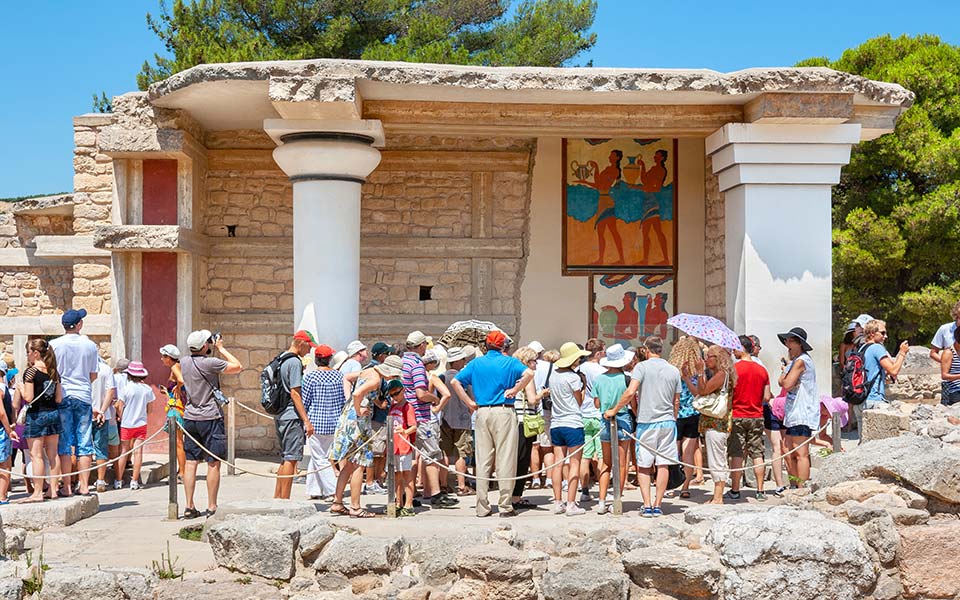
© Shutterstock
The Palace of Knossos
The Palace of Knossos, situated 5km south of the trendy metropolis of Heraklion, is arguably probably the most well-known archaeological web site in Crete and the second most visited web site in Greece, attracting over 1,000,000 guests annually. This sprawling city advanced, sometimes called Europe’s oldest metropolis, was the ceremonial and political middle of the mysterious Minoan civilization, which flourished from roughly 2000 to 1400 BC. Steeped in delusion and historical past, the palace is just not solely an architectural marvel but additionally a key to understanding the early growth of Europe’s first superior civilization.
Integral to the research of the Bronze Age Minoans, Knossos is a testomony to their subtle architectural abilities. The location was systematically excavated by pioneering British archaeologist Sir Arthur Evans (1851-1941) within the early twentieth century, revealing elaborate wall frescoes, superior plumbing programs, and storerooms stuffed with clay tablets inscribed with Linear A and Linear B scripts, the earliest recognized writing programs in Europe.
The location is dominated by the monumental “Palace of Minos” – the seat of energy of the legendary king Minos – and is intertwined with a few of Greek mythology’s most charming tales. In accordance with legend, king Minos commissioned the architect Daedalus to construct a labyrinth to deal with his son, the Minotaur, a creature that was half-man, half-bull. This mythological maze is believed to be impressed by the palace’s intricate structure. Moreover, the parable of Theseus and the Minotaur, by which the hero Theseus slays the beast with the assistance of Minos’ daughter, Ariadne, additional provides to the positioning’s attract and mystical significance.
Location: 5km south of Heraklion.
Opening Hours: Sometimes open each day from 8:00am to eight:00pm in the course of the summer time months.
Ticket Worth: Round €15 for adults, with reductions for kids and seniors.
Accessibility: The location is partially accessible to these with mobility points, however some areas could also be difficult because of uneven terrain.
For extra info, go to the website.
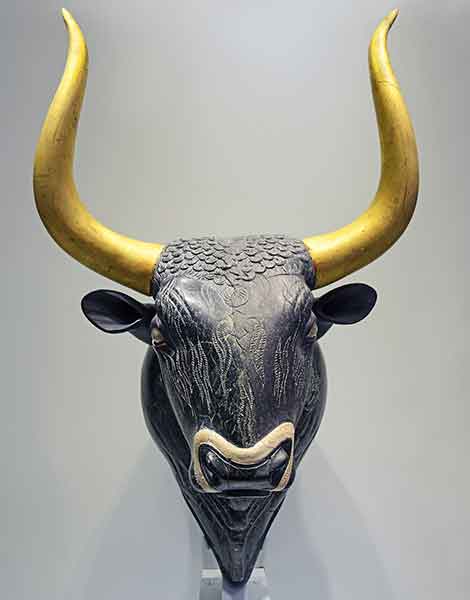
© Shutterstock
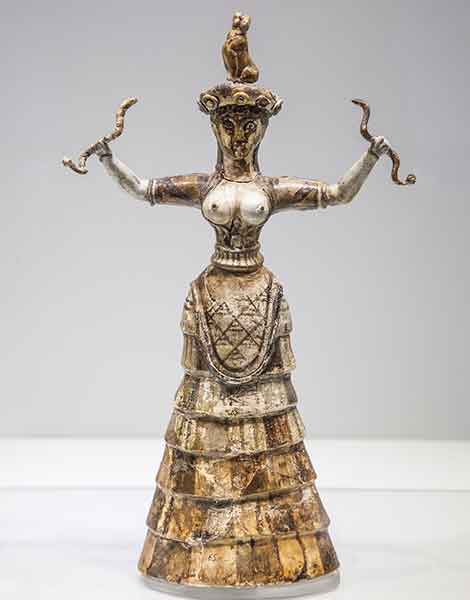
© Shutterstock
Highlights
Central Court docket: The center of the palace, the place ceremonies and gatherings came about.
Grand Staircases: Resulting in a number of ranges, indicative of the palace’s advanced construction.
Residential Quarters: Non-public residences for the royal household and palace elites, that includes superior plumbing programs.
Workshops and Storerooms: Areas the place artisans crafted items and surplus meals was saved, together with massive portions of grain, oil, and wine. Look out for the stays of the large storage magazines, stuffed with large pithoi (ceramic storage jars).
Throne Room: A ceremonial room with a gypsum throne, believed to be the oldest throne in Europe.
Artwork and Frescoes: The partitions of Knossos are adorned with vibrant frescoes that present a glimpse into Minoan life and spiritual practices. Scenes of nature, sporting actions comparable to bull-leaping, and processions spotlight the creative achievements and cultural values of the island’s Bronze Age inhabitants. Most of the authentic frescoes from the positioning, in addition to quite a few moveable artifacts, are on show on the Heraklion Archaeological Museum.
Phaistos Palace
Located on the jap level of a ridge overlooking the fertile Messara Plain of south central Crete and with spectacular views of the encompassing mountains, Phaistos Palace is without doubt one of the island’s most vital archaeological websites. Because the second-largest Minoan palace, it rivals Knossos in historic significance however is much less well-known to nearly all of guests. The palace’s serene location and the invention of the enigmatic Phaistos Disc, at present on show on the Heraklion Archaeological Museum, make it a charming vacation spot for historical past fanatics and informal guests alike.
Phaistos served as a significant administrative and spiritual middle in the course of the Minoan Bronze Age, flourishing from roughly 1900 to 1450 BC, though it was first inhabited as early because the mid-4th millennium BC. The location was first excavated within the first years of the twentieth century by a crew of Italian archaeologists led by Federico Halbherr (1857-1930) and Luigi Pernier (1874-1937). Their discoveries revealed a extremely advanced and well-organized society, highlighting the superior nature of Minoan tradition.
The palace is famend for its strategic location, boasting breathtaking views of the Messara Plain and the encompassing mountains. This picturesque setting enhances the customer expertise, permitting for moments of reflection amidst the ruins.
Location: 62km south of Heraklion.
Opening Hours: Typically open from 8:00am to eight:00pm in the summertime months.
Ticket Worth: Roughly €8 for adults, with decreased costs for kids and seniors.
Accessibility: The location has uneven terrain, so comfy footwear is beneficial. Some areas could also be difficult for these with mobility points.

© C messier, edit by Bammesk / Public area

© C messier, edit by Bammesk / Public area
Phaistos Disc
One of the intriguing artifacts found at Phaistos is the well-known Phaistos Disc, on show on the Heraklion Archaeological Museum. This clay pill, 15 cm in diameter and courting to someday within the mid-2nd millennium BC (c. 1700), is inscribed with a spiral of 45 mysterious symbols (glyphs). Regardless of intensive research, the disc’s script stays undeciphered, including a component of thriller to the positioning.
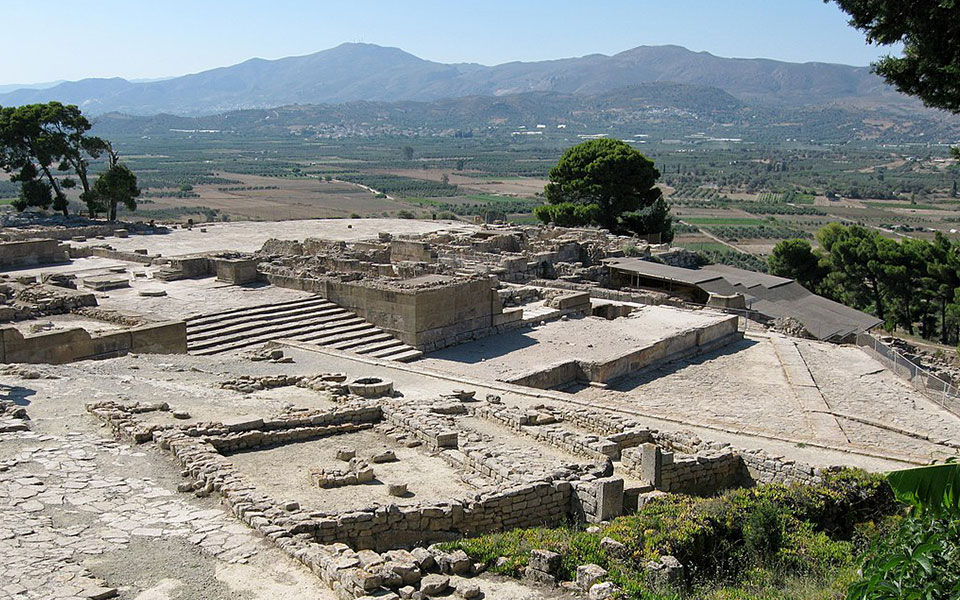
© Olaf Tausch / Public area
Highlights
Monumental Entance: The Propylon, the monumental entrance to the palace is probably the most spectacular recognized construction of its type. A 14m huge staircase, which slopes downwards, served as a hall to the Central Court docket.
Central Court docket: The nucleus of the palace is a 55m lengthy central peristyle courtroom round which the rooms are organized, together with the storerooms and shrines on the west aspect, the royal quarters on the north, and the workshops on the east.
West (Theatral) Court docket: To the west of the storerooms is the “theatrical space,” an open-air house believed to have been used for public performances and spiritual rituals.
Close by Points of interest
Agia Triada: A smaller Minoan villa advanced close by, providing further insights into Minoan structure and society.
Kommos Seashore: A wonderful sandy seaside a brief drive from Phaistos, ultimate for enjoyable after exploring the ruins.

© Marc Ryckaert (MJJR) / Public area
Gortyna, the Roman Capital of Creta et Cyrenaica
Remaining on the fertile Messara Plain, Gortyna, or Gortyn, is a web site of immense historic and archaeological significance. Not like the Minoan palaces of Knossos and Phaistos, Gortyna flourished in the course of the Classical, Hellenistic, and Roman intervals, serving as a outstanding metropolis in historic Crete from roughly the seventh century BC to the ninth century AD. The location is famend for its well-preserved ruins and the invention of the “Gortyn Code,” one in every of Europe’s oldest and most complete authorized inscriptions.
Gortyna additionally served as the capital of the Roman province of Creta et Cyrenaica, which encompassed a area of North Africa (a part of modern-day Libya). Archaeological excavations, began within the late nineteenth century by the Italian College of Archaeology at Athens, have revealed a wealth of buildings and artifacts that illustrate town’s lengthy historical past and its function as a cultural, administrative, and spiritual middle.
Gortyna can be important for its early Christian historical past. The location is residence to the Basilica of Saint Titus, named after the primary bishop of Crete and a disciple of the Apostle Paul. The extant stays of this early Christian church, constructed within the mid-Sixth to early seventh century AD, point out that it was a three-aisled basilica with a transept and dome. The interiors would have been richly painted.
Location: 45km south of Heraklion.
Opening Hours: Open each day from 8:30am to eight:00pm in the summertime months.
Ticket Worth: Round €6 for adults, with concessions obtainable for kids and seniors.
Accessibility: The terrain is uneven, so comfy footwear is beneficial. Some areas could also be difficult for these with mobility points.

© Afrank99 / Public area
Gortyn Code
One of the outstanding discoveries at Gortyna is the Gortyn Code, an in depth authorized inscription courting again to the primary half of the fifth century BC. Carved into the stone partitions of a public constructing within the agora (a “bouleuterion,” or meeting home), the Gortyn Code gives detailed insights into historic Cretan regulation, masking features comparable to rape and adultery, divorce and marriage rights, property rights and inheritance, and the rights of slaves. This authorized code is a vital supply for understanding the the early growth of social and authorized frameworks in historic Greece.
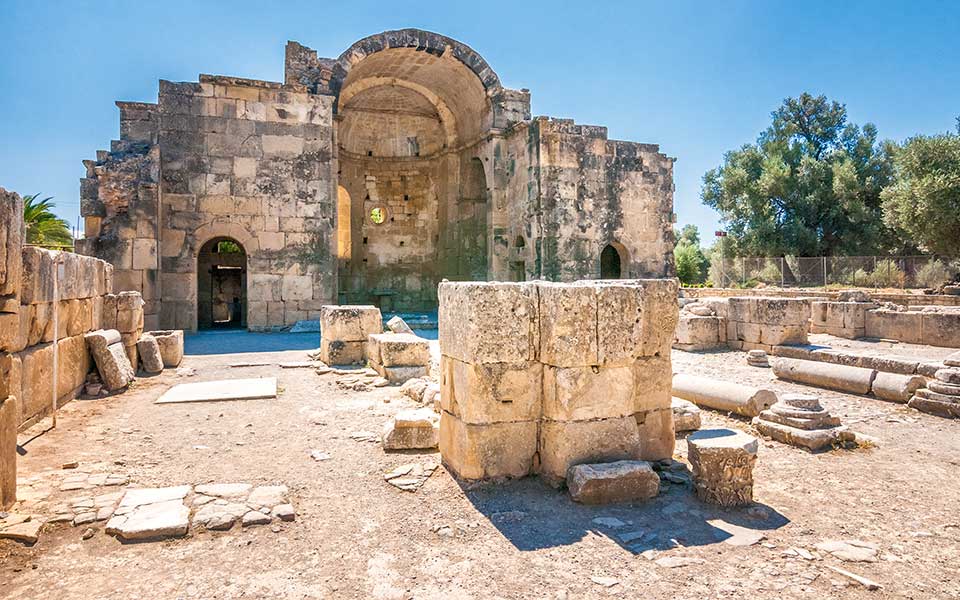
© Shutterstock
Highlights
The Praetorium: The Roman governor’s residence, constructed within the 1st century AD, showcasing the grandeur and administrative significance of Gortyna in the course of the Roman interval.
Temple of Apollo: One of many oldest temples on the positioning, devoted to Pythian Apollo, reflecting town’s non secular practices. Close by are the ruins of a temple devoted to the worship of a number of Egyptian deities, Isis, Serapis, and Anubis.
Nymphaeum: An elaborate marble fountain, courting from the 2nd century AD. It was constructed to provide the Praetorium with a gentle provide of recent water – a valuable commodity in arid Crete.
Roman Odeon: This small theatre, is one other spotlight of Gortyna. It was used for musical performances and public gatherings, reflecting the cultural actions of town’s inhabitants. The Odeon’s well-preserved construction permits guests to think about the vigorous cultural life that after thrived in Gortyna.
Close by Points of interest:
Agioi Deka Village: A close-by village named after the Ten Martyrs of Gortyna, with a church and memorial devoted to those early Christian saints.
Messara Plain: The encompassing plain provides alternatives for exploring conventional Cretan villages and having fun with the pure fantastic thing about the area.
Malia Palace
Malia Palace, situated on the north coast, 37km east of Heraklion, is the third-largest Minoan palace on the island. Identified for its intensive ruins and distinctive artifacts, Malia provides a extra intimate and fewer crowded expertise in comparison with the extra well-known palaces of Knossos and Phaistos.
The palace served as an vital administrative and spiritual middle in the course of the Minoan Bronze Age, from the early to mid-2nd millennium BC. The location was first excavated by French archaeologists within the early twentieth century, revealing a wealth of details about historic Cretan structure, society, and financial system.
Malia Palace is famend for the invention of the well-known Minoan gold bee pendant, a masterpiece of historic Cretan jewellery, now exhibited on the Heraklion Archaeological Museum. This beautiful piece, that includes two bees encircling a drop of honey, Found in a grave within the cemetery of the First or “Protopalatial” Interval at Malia and dated to 1700 BC. Technically and stylistically influenced by the Egyptians and Babylonians, Minoan jewellers used smelting know-how to refine gold and different valuable metals to provide a staggering array of objects and designs. Finely crafted items just like the bee pendant would have been crushed, engraved and embossed by hand.
Location: 37km east of Heraklion.
Opening Hours: Sometimes open from 8:00am to six:00pm in the summertime months.
Ticket Worth: Round €6 for adults, with reductions for kids and seniors.
Accessibility: The location has uneven terrain, so comfy footwear is beneficial. Some areas could also be difficult for these with mobility points.
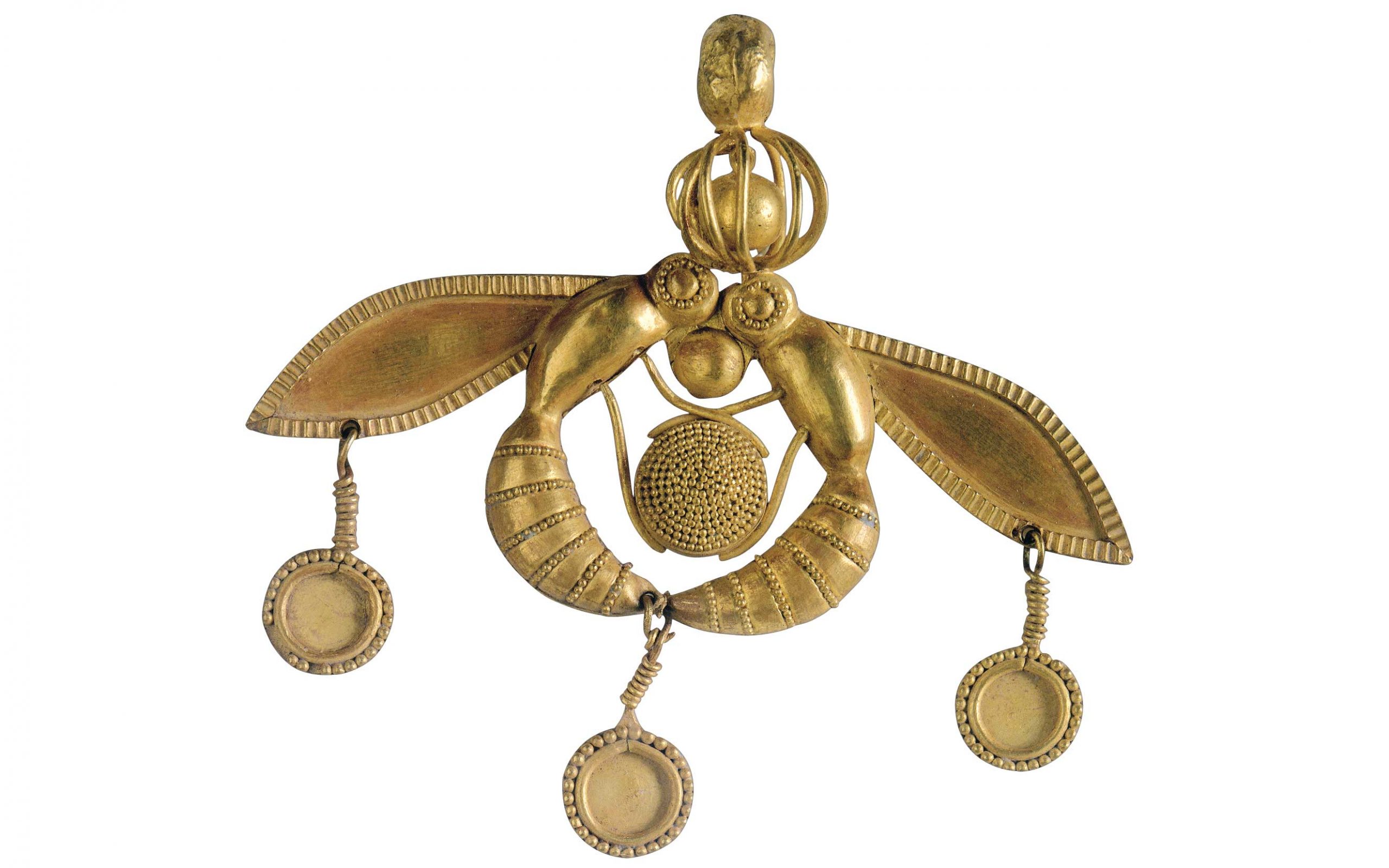
Highlights
Central Court docket: The center of the palace, the place non secular ceremonies and public gatherings came about. The massive central courtroom is surrounded by storage rooms to the east, the theater and a number of other crypts and corridors to the West
Space “M”: A big advanced courting again to the Protopalatial interval, situated to the north-east of the palace, contains the stays of workshops, storage areas, and cult rooms.
The Necropolis: Close by excavations of the Necropolis at Chrysolakos (which means “gold pit”) yielded a wealth of vital Minoan artifacts, together with the well-known gold bee pendant.
Close by Points of interest
Malia City: The close by city of Malia provides a spread of facilities, together with eating places, outlets, and seashores, making it a wonderful base for exploring the broader area.
Milatos Cave: A brief drive from Malia, this cave has historic significance and provides a novel pure expertise.
Zakros Palace
Zakros Palace, situated on the east coast, is without doubt one of the island’s lesser-known however extremely important Minoan palaces, due to its protected harbor. The location’s distant location and well-preserved ruins make it a captivating vacation spot for archaeology fanatics and guests in search of a quieter exploration away from the extra crowded websites.
Zakros Palace performed a vital function within the historical past of Bronze Age Crete as a significant industrial hub for commerce to the east. This place facilitated intensive commerce with Egypt, the Levant, and different components of the Mediterranean. The location was first excavated within the early twentieth century by archaeologist D.G. Hogarth of the British College at Athens, working beneath the auspices of the Cretan Exploration Fund. These excavations yielded Late Minoan homes and different useful artifacts, together with pottery, bronze instruments, clay tablets, and quite a lot of inscribed seals.
Famend Greek archaeologist Nikolaos Platon took up the reins within the early Nineteen Sixties, discovering the New Palace advanced, an enormous administrative middle that covers an space of some 8000 sq. meters. It stays one of many best-preserved Minoan palaces.
Location: 45km east of Sitia.
Opening Hours: Typically open from 8:30am to six:30pm.
Ticket Worth: Roughly €6 for adults, with decreased charges for kids and seniors.
Accessibility: The location has uneven terrain, so comfy footwear is beneficial. Some areas could also be difficult for these with mobility points.

© Vladimír Držík / Public area
Highlights
Central Court docket: With an space of 30 x 12 meters, the central courtroom served as the focus for public and spiritual actions, reflecting the palace’s significance as a social and ceremonial middle.
Residential Quarters: The royal residences and dwelling areas, full with superior drainage and water programs, could be discovered on the jap wing of the Palace. The residences for the king and the queen are separate.
Workshops and Storerooms: The west wing of the Palace options intensive workshops and storerooms, indicating the palace’s function in manufacturing and commerce. These areas contained massive pithoi (storage jars) for items like oil, wine, and grain. One of many workshops is believed to be a spot the place faience pottery was made.
Sacred Areas: Spiritual areas inside the palace, together with shrines and altars, spotlight the non secular practices and rituals of the Minoans. One among these rooms includes a lustral basin, which can have been utilized in purification rituals.
Close by Points of interest
Gorge of the Useless: A close-by gorge with historic Minoan tombs carved into the cliffs. It provides a scenic hike and an extra historic expertise.
Kato Zakros Village: An enthralling village near the palace, the place guests can get pleasure from native delicacies and hospitality.
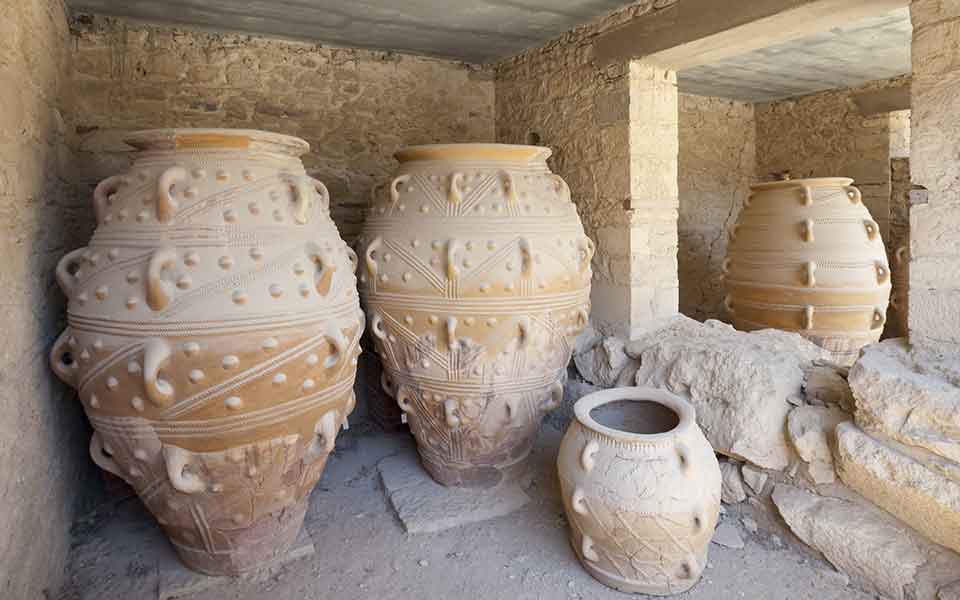
© Shutterstock
Ideas for Visiting Archaeological Websites in Crete
Plan Forward: Verify the opening hours and ticket costs prematurely, as they will range seasonally.
Guided Excursions: Take into account taking a guided tour to reinforce your understanding of the historic and cultural significance of every web site.
Snug Footwear: Put on comfy footwear, as you’ll be strolling and exploring uneven terrain.
Keep Hydrated: Carry water, particularly in the course of the scorching summer time months.
Respect the Websites: Observe all tips and respect the archaeological websites to assist protect them for future generations.



Recent Comments